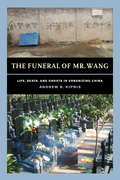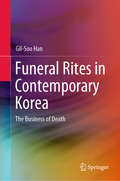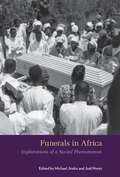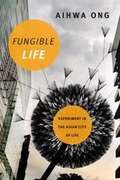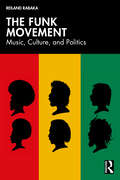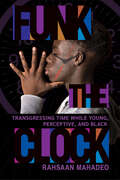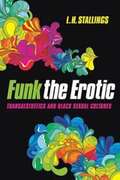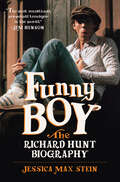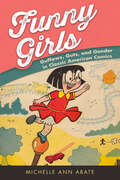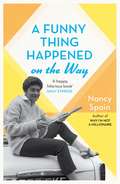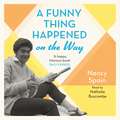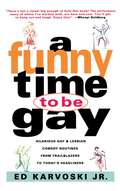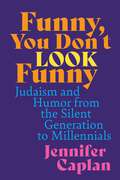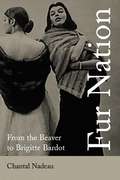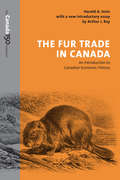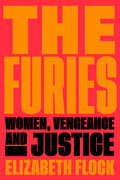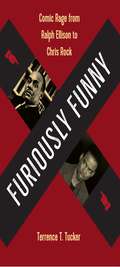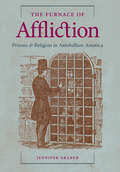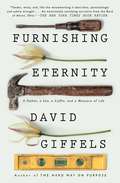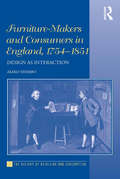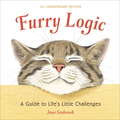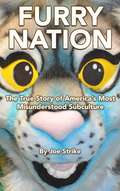- Table View
- List View
The Funeral of Mr. Wang: Life, Death, and Ghosts in Urbanizing China
by Andrew B. KipnisA free open access ebook is available upon publication. Learn more at www.luminosoa.org. In rural China funerals are conducted locally, on village land by village elders. But in urban areas, people have neither land for burials nor elder relatives to conduct funerals. Chinese urbanization, which has increased drastically in recent decades, involves the creation of cemeteries, state-run funeral homes, and small private funerary businesses. The Funeral of Mr. Wang examines social change in urbanizing China through the lens of funerals, the funerary industry, and practices of memorialization. It analyzes changes in family life, patterns of urban sociality, transformations in economic relations, the politics of memorialization, and the echoes of these changes in beliefs about the dead and ghosts.
Funeral Rites in Contemporary Korea: The Business of Death
by Gil-Soo HanThis book explores 21st century Korean society on the basis of its dramatically transforming and rapidly expanding commercial funeral industry. With insights into contemporary Confucianism, shamanism and filial piety, as well as modernisation, urbanisation, the division of labour and the digitalisation of consumption, it is the first study of its kind to offer a sophisticated, integrated sociological analysis of how the commodification of death intersects with capitalism, popular culture and everyday life in contemporary Korea. Through innovative analyses of funeral advertising and journalism, screen and literary representations of funerals, online media, consumer accounts of using funeral services and other sources, it offers a complex picture of the widespread effects of economic development, urbanisation and modernisation in South Korean society over the past quarter century. In the aftermath of the Korean “economic miracle” novel ways of paying respect to deceased kin have emerged; using Max Weber's concept of “pariah capitalism”, Gil-Soo Han shows how the heightened obsession with and boom in the commodification of death in Korea reflects radical transformations in both capital and culture.
Funerals In Africa
by Joel Noret Michael JindraAcross Africa, funerals and events remembering the dead have become larger and even more numerous over the years. Whereas in the West death is normally a private and family affair, in Africa funerals are often the central life cycle event, unparalleled in cost and importance, for which families harness vast amounts of resources to host lavish events for multitudes of people with ramifications well beyond the event. Though officials may try to regulate them, the popularity of these events often makes such efforts fruitless, and the elites themselves spend tremendously on funerals. This volume brings together scholars who have conducted research on funerary events across sub-Saharan Africa. The contributions offer an in-depth understanding of the broad changes and underlying causes in African societies over the years, such as changes in religious beliefs, social structure, urbanization, and technological changes and health.
Funerary Practices and Models in the Ancient Andes
by Peter Eeckhout Lawrence S. Owens"This edited volume focuses on the funerary archaeology of the Pan-Andean area in the pre-Hispanic period. The contributors examine the treatment of the dead and provide an understanding of how these ancient groups coped with mortality, as well as the ways in which they strove to overcome the effects of death. The contributors also present previously unpublished discoveries and employ a range of academic and analytical approaches that have rarely--if ever--been utilised in South America before. The book covers the Formative Period to the end of the Inca Empire, and the chapters together comprise a state-of-the-art summary of all the best research on Andean funerary archaeology currently being carried out around the globe"--
Fungible Life: Experiment in the Asian City of Life
by Aihwa OngIn Fungible Life Aihwa Ong explores the dynamic world of cutting-edge bioscience research, offering critical insights into the complex ways Asian bioscientific worlds and cosmopolitan sciences are entangled in a tropical environment brimming with the threat of emergent diseases. At biomedical centers in Singapore and China scientists map genetic variants, disease risks, and biomarkers, mobilizing ethnicized "Asian" bodies and health data for genomic research. Their differentiation between Chinese, Indian, and Malay DNA makes fungible Singapore's ethnic-stratified databases that come to "represent" majority populations in Asia. By deploying genomic science as a public good, researchers reconfigure the relationships between objects, peoples, and spaces, thus rendering "Asia" itself as a shifting entity. In Ong's analysis, Asia emerges as a richly layered mode of entanglements, where the population's genetic pasts, anxieties and hopes, shared genetic weaknesses, and embattled genetic futures intersect. Furthermore, her illustration of the contrasting methods and goals of the Biopolis biomedical center in Singapore and BGI Genomics in China raises questions about the future direction of cosmopolitan science in Asia and beyond.
The Funk Movement: Music, Culture, and Politics
by Reiland RabakaRabaka explores funk as a distinct multiform of music, aesthetics, politics, social vision, and cultural rebellion that has been remixed and continues to influence contemporary Black popular music and Black popular culture, especially rap music and the Hip Hop Movement.The Funk Movement was a sub-movement within the larger Black Power Movement and its artistic arm, the Black Arts Movement. Moreover, the Funk Movement was also a sub-movement within the Black Women’s Liberation Movement between the late 1960s and late 1970s, where women’s funk, especially Chaka Khan and Betty Davis’s funk, was understood to be a form of “Black musical feminism” that was as integral to the movement as the Black political feminism of Angela Davis or the Combahee River Collective and the Black literary feminism of Toni Morrison or Alice Walker. This book also demonstrates that more than any other post-war Black popular music genre, the funk music of the 1960s and 1970s laid the foundation for the mercurial rise of rap music and the Hip Hop Movement in the 1980s and 1990s.This book is primarily aimed at scholars and students working in popular music studies, popular culture studies, American studies, African American studies, cultural studies, ethnic studies, critical race studies, women’s studies, gender studies, and sexuality studies.
Funk the Clock: Transgressing Time While Young, Perceptive, and Black
by Rahsaan MahadeoFunk the Clock is about those said to be emblematic of the future yet denied a place in time. Hence, this book is both an invitation and provocation for Black youth to give the finger to the hands of time, while inviting readers to follow their lead.In revealing how time is racialized, how race is temporalized, and how racism takes time, Rahsaan Mahadeo makes clear why conventional sociological theories of time are both empirically and theoretically unsustainable and more importantly, why they need to be funked up/with. Through his study of a youth center in Minneapolis, Mahadeo provides examples of Black youth constructing alternative temporalities that center their lived experiences and ensure their worldviews, tastes, and culture are most relevant and up to date. In their stories exists the potential to stretch the sociological imagination to make the familiar (i.e., time) strange. Funk the Clock forges new directions in the study of race and time by upending what we think we know about time, while centering Black youth as key collaborators in rewriting knowledge as we know it.
Funk the Erotic: Transaesthetics and Black Sexual Cultures
by L. H. StallingsFunk. It is multisensory and multidimensional philosophy used in conjunction with the erotic, eroticism, and black erotica. It is the affect that shapes film, performance, sound, food, technology, drugs, energy, time, and the seeds of revolutionary ideas for black movements. But funk is also an experience to feel, to hear, to touch and taste, and in Funk the Erotic , L. H. Stallings uses funk in all its iterations as an innovation in black studies. Stallings uses funk to highlight the importance of the erotic and eroticism in Black cultural and political movements, debunking "the truth of sex" and its histories. Brandishing funk as a theoretical tool, Stallings argues that Western theories of the erotic fail as universally applicable terms or philosophies, and thus lack utility in discussions of black bodies, subjects, and culture. <P><P> In considering the Victorian concept of freak in black funk, Stallings proposes that black artists across all media have fashioned a tradition that embraces the superfreak, sexual guerrilla, sexual magic, mama's porn, black trans narratives, and sex work in a post-human subject position. Their goal: to ensure survival and evolution in a world that exploits black bodies in capitalist endeavors, imperialism, and colonization. Revitalizing and wide-ranging, Funk the Erotic offers a needed examination of black sexual cultures, a discursive evolution of black ideas about eroticism, a critique of work society, a reexamination of love, and an articulation of the body in black movements.
Funny Boy: The Richard Hunt Biography
by Jessica Max Stein"The most sensational, perpetual teenager in the world.” —Jim Henson "To know him was to love him, and we do." —Mark Hamill Funny Boy: The Richard Hunt Biography tells the life story of a gifted performer whose gleeful irreverence, sharp wit and generous spirit inspired millions. Richard Hunt was one of the original main five performers in the Muppet troupe. He brought to life an impressive range of characters on The Muppet Show, Sesame Street, Fraggle Rock and various Muppet movies, everyone from eager gofer Scooter to elderly heckler Statler, groovy girl Janice to freaked-out lab helper Beaker, even early versions of Miss Piggy and Elmo. Hunt also acted, directed and mentored the next generation of performers. His accomplishments are all the more remarkable in that he crammed them all into only 40 years. Richard Hunt was just 18 years old when he joined Jim Henson’s company, where his edgy humor quickly helped launch the Muppets into international stardom. Hunt lived large, savoring life’s delights, amassing a vivid, disparate community of friends. Even when the AIDS epidemic wrought its devastation, claiming the love of Hunt’s life and threatening his own life, he showed an extraordinary sense of resilience, openness and joy. Hunt’s story exemplifies how to follow your passion, foster your talents, adapt to life’s surprises, genuinely connect with everyone from glitzy celebrities to gruff cab drivers – and have a hell of a lot of fun along the way.
Funny Girls: Guffaws, Guts, and Gender in Classic American Comics
by Michelle Ann AbateFor several generations, comics were regarded as a boys’ club—created by, for, and about men and boys. In the twenty-first century, however, comics have seen a rise of female creators, characters, and readers. While this sudden presence of women and girls in comics is being regarded as new and noteworthy, the observation is not true for the genre’s entire history. Throughout the first half of the twentieth century, the medium was enjoyed equally by both sexes, and girls were the protagonists of some of the earliest, most successful, and most influential comics. In Funny Girls: Guffaws, Guts, and Gender in Classic American Comics, Michelle Ann Abate examines the important but long-overlooked cadre of young female protagonists in US comics during the first half of the twentieth century. She treats characters ranging from Little Orphan Annie and Nancy to Little Lulu, Little Audrey of the Harvey Girls, and Li’l Tomboy—a group that collectively forms a tradition of Funny Girls in American comics. Abate demonstrates the massive popularity these Funny Girls enjoyed, revealing their unexplored narrative richness, aesthetic complexity, and critical possibility. Much of the humor in these comics arose from questioning gender roles, challenging social manners, and defying the status quo. Further, they embodied powerful points of collection about both the construction and intersection of race, class, gender, and age, as well as popular perceptions about children, representations of girlhood, and changing attitudes regarding youth. Finally, but just as importantly, these strips shed light on another major phenomenon within comics: branding, licensing, and merchandising. Collectively, these comics did far more than provide amusement—they were serious agents for cultural commentary and sociopolitical change.
Funny in Farsi: A Memoir of Growing Up Iranian in America (Readers Circle Ser.)
by Firoozeh DumasNEW YORK TIMES BESTSELLER • Finalist for the PEN/USA Award in Creative Nonfiction, the Thurber Prize for American Humor, and the Audie Award in Biography/MemoirThis Random House Reader’s Circle edition includes a reading group guide and a conversation between Firoozeh Dumas and Khaled Hosseini, author of The Kite Runner!“Remarkable . . . told with wry humor shorn of sentimentality . . . In the end, what sticks with the reader is an exuberant immigrant embrace of America.”—San Francisco ChronicleIn 1972, when she was seven, Firoozeh Dumas and her family moved from Iran to Southern California, arriving with no firsthand knowledge of this country beyond her father’s glowing memories of his graduate school years here. More family soon followed, and the clan has been here ever since. Funny in Farsi chronicles the American journey of Dumas’s wonderfully engaging family: her engineer father, a sweetly quixotic dreamer who first sought riches on Bowling for Dollars and in Las Vegas, and later lost his job during the Iranian revolution; her elegant mother, who never fully mastered English (nor cared to); her uncle, who combated the effects of American fast food with an army of miraculous American weight-loss gadgets; and Firoozeh herself, who as a girl changed her name to Julie, and who encountered a second wave of culture shock when she met and married a Frenchman, becoming part of a one-couple melting pot. In a series of deftly drawn scenes, we watch the family grapple with American English (hot dogs and hush puppies?—a complete mystery), American traditions (Thanksgiving turkey?—an even greater mystery, since it tastes like nothing), and American culture (Firoozeh’s parents laugh uproariously at Bob Hope on television, although they don’t get the jokes even when she translates them into Farsi). Above all, this is an unforgettable story of identity, discovery, and the power of family love. It is a book that will leave us all laughing—without an accent.
A Funny Thing Happened On The Way: Discover the 1960s trend for buying land on a Greek island and building a house. How hard could it be…?
by Nancy Spain<p>The superb classic memoir from a dazzlingly eccentric and endlessly fascinating author and feminist icon - a woman very much ahead of her time - including her time spent on the glorious island of Skiathos<p> <p>Nancy Spain was one of the most celebrated - and notorious - writers and broadcasters of the 50s and 60s. Witty, controversial and brilliant, she lived openly as a lesbian (sharing a household with her two lovers and their various children) and was frequently litigated against for her newspaper columns - Evelyn Waugh successfully sued her for libel... twice.<p> <p>Nancy Spain had a deep love of the Mediterranean. So it was no surprise when, in the 1960s, she decided to build a place of her own on the Greek island of Skiathos. With an impractical nature surpassed only by her passion for the project, and despite many obstacles, she gloriously succeeded. This classic memoir is infused with all Spain's chaotic brilliance, zest for life and single-minded pursuit of a life worth living.<p>
A Funny Thing Happened On The Way: Discover the 1960s trend for buying land on a Greek island and building a house. How hard could it be…?
by Nancy SpainThe superb classic memoir from a dazzlingly eccentric and endlessly fascinating author and feminist icon - a woman very much ahead of her time - including her time spent on the glorious island of Skiathos'A happy, hilarious book' Daily ExpressNancy Spain was one of the most celebrated - and notorious - writers and broadcasters of the 50s and 60s. Witty, controversial and brilliant, she lived openly as a lesbian (sharing a household with her two lovers and their various children) and was frequently litigated against for her newspaper columns - Evelyn Waugh successfully sued her for libel... twice.Nancy Spain had a deep love of the Mediterranean. So it was no surprise when, in the 1960s, she decided to build a place of her own on the Greek island of Skiathos. With an impractical nature surpassed only by her passion for the project, and despite many obstacles, she gloriously succeeded. This classic memoir is infused with all Spain's chaotic brilliance, zest for life and single-minded pursuit of a life worth living.Perfect for fans of A PLACE IN THE SUN and ESCAPE TO THE COUNTRY'Full of fun, and that zest of intelligence that never left her' Sunday Times
A Funny Time to Be Gay
by Ed KarvoskiIn A Funny Time to Be Gay, Ed Karvoski Jr. traces the evolution of gay and lesbian comedy from the few pioneers in New York's Greenwich Village in the seventies, to the mavericks who played San Francisco's famed Valencia Rose in the eighties, to the comics who starred in their own TV specials in the nineties and continue to headline comedy clubs. Among the more than 30 humorists spotlighted... · TOM AMMIANO - longtime San Francisco elected official · JUDY CARTER - three-time author including The Homo Handbook· KATE CLINTON - three-time author including Don't Get Me Started · SABRINA MATTHEWS - star of own Comedy Central special· BOB SMITH - three-time author including Openly Bob and star of own HBO special· JASON STUART - frequent TV guest appearances · ROBIN TYLER - performer, producer and proprietor of a women's cruise line· SUZANNE WESTENHOEFER - star of own HBO special · DANNY WILLIAMS - longtime MC at RSVP Cruises ... and more! "To the next generation of showbiz hopefuls who are gay or lesbian and choose not to hide it: make a grand entrance onto the comedy-club stages and television and film studios. The closet door has been set ajar. As any of these openly gay and lesbians comics will tell you, 'A funny thing happened on the way out of the closet!'"-- Ed Karvoski Jr., from author's introduction
Funny, You Don't Look Funny: Judaism and Humor from the Silent Generation to Millennials
by Jennifer CaplanIn this comprehensive approach to Jewish humor focused on the relationship between humor and American Jewish practice, Jennifer Caplan calls us to adopt a more expansive view of what it means to "do Jewish," revealing that American Jews have, and continue to, turn to humor as a cultural touchstone. Caplan frames the book around four generations of Jewish Americans from the Silent Generation to Millennials, highlighting a shift from the utilization of Jewish-specific markers to American-specific markers. Jewish humor operates as a system of meaning-making for many Jewish Americans. By mapping humor onto both the generational identity of those making it and the use of Judaism within it, new insights about the development of American Judaism emerge. Caplan’s explication is innovative and insightful, engaging with scholarly discourse across Jewish studies and Jewish American history; it includes the work of Joseph Heller, Larry David, Woody Allen, Seinfeld, the Coen brothers films, and Broad City. This example of well-informed scholarship begins with an explanation of what makes Jewish humor Jewish and why Jewish humor is such a visible phenomenon. Offering ample evidence and examples along the way, Caplan guides readers through a series of phenomenological and ideological changes across generations, concluding with commentary regarding the potential influences on Jewish humor of later Millennials, Gen Z, and beyond.
Fur Nation: From the Beaver to Brigitte Bardot
by Chantal NadeauFur Nation traces the interwoven relationships between sexuality, national identity, and colonialism. Chantal Nadeau shows how Canada, a white settler colony, bases its existence and its nationhood on a complex sexual economy based on women wrapped in fur.Nadeau traces the centrality of fur through a series of intriguing case studies, including:* Hollywood's take on the 330 year history of the Hudson Bay Company, founded to exploit Canada's rich fur resources* the life of a postwar fur fashion photographer* a 1950s musical called Fur Lady* the battle between Brigitte Bardot's anti-fur activists and the fur industry.Nadeau highlights the connection between 'fur ladies' - women wearing, exploiting or promoting furs - and the beaver, symbol of Canada and nature's master builder. She shows how, in postcolonial Canada, the nation is sexualised around female reproduction and fur, which is both a crucial factor in economic development, and a powerful symbol through which the nation itself is conceived and commodified. Fur Nation demonstrates that, for Canada, fur really is the fabric of a nation.
The Fur Trade in Canada: An Introduction to Canadian Economic History
by Arthur Ray Harold InnisAt the time of its publication in 1930, The Fur Trade in Canada challenged and inspired scholars, historians, and economists. Now, almost seventy years later, Harold Innis's fundamental reinterpretation of Canadian history continues to exert a magnetic influence.Innis has long been regarded as one of Canada's foremost historians, and in The Fur Trade in Canada he presents several histories in one: social history through the clash between colonial and aboriginal cultures; economic history in the development of the West as a result of Eastern colonial and European needs; and transportation history in the case of the displacement of the canoe by the York boat. Political history appears in Innis's examination of the nature of French-British rivalry and the American Revolution; and business history is represented in his detailed account of the Hudson's Bay and Northwest Companies and the industry that played so vital a role in the expansion of Canada.In his introduction to this new edition, Arthur J. Ray argues that The Fur Trade in Canada is the most definitive economic history and geography of the country ever produced. Innis's revolutionary conclusion - that Canada was created because of its geography, not in spite of it - is a captivating idea but also an enigmatic proposition in light of the powerful decentralizing forces that threaten the nation today. Ray presents the history of the book and concludes that "Innis's great book remains essential reading for the study of Canada."
The Furies: Women, Vengeance, and Justice
by Elizabeth FlockRenowned journalist and author of The Heart is a Shifting Sea Elizabeth Flock investigates what few dare to confront, or even imagine: the role and necessity of female-led violence in response to systems built against women.In The Furies, Elizabeth Flock examines how three real-life women have used violence to fight back, and how views of women who defend their lives are often distorted by their depictions in media and pop culture. These three immersive narratives follow Brittany Smith, a young woman from Stevenson, Alabama, who killed a man she said raped her but was denied the protection of the Stand-Your-Ground law; Angoori Dahariya, leader of a gang in Uttar Pradesh, India, dedicated to avenging victims of domestic abuse; and Cicek Mustafa Zibo, a fighter in a thousands-strong all-female militia that battled ISIS in Syria. Each woman chose to use lethal force to gain power, safety, and freedom when the institutions meant to protect them—government, police, courts—utterly failed to do so. Each woman has been criticized for their actions by those who believe that violence is never the answer.Through Flock’s propulsive prose and remarkable research on the ground—embedded with families, communities, and organizations in America, India, and Syria—The Furies examines, with exquisite nuance, whether the fight for women’s safety is fully possible without force. Do these women’s acts of vengeance help or hurt them, and ultimately, all women? Did they create lasting change in entrenched misogynistic and paternalistic systems? And ultimately, what would societies in which women have real power look like?Across mythologies and throughout history, the stories of women’s lives frequently end with their bodies as sites of violence. But there are also celebrated tales of women, real and fictional, who have fought back. The novelistic accounts of these three women provoke questions about how to achieve true gender equality, and offer profound insights in the quest for answers.
Furiously Funny: Comic Rage from Ralph Ellison to Chris Rock
by Terrence T. Tucker"An important and timely expansion of American racial discourse. Tucker’s demonstration of how the comic is not (just) funny and how rage is not (just) destructive is a welcome reminder that willful injustice merits irreverent scorn. "—Derek C. Maus, coeditor of Post-Soul Satire: Black Identity after Civil Rights "Adroitly explores how comic rage is a skillfully crafted, multifaceted critique of white supremacy and a soaring articulation of African American humanity and possibility. Sparkling and highly readable scholarship."—Keith Gilyard, author of John Oliver Killens: A Life of Black Literary Activism A combustible mix of fury and radicalism, pathos and pain, wit and love—Terrence Tucker calls it "comic rage," and he shows how it has been used by African American artists to aggressively critique America’s racial divide. In Furiously Funny, Tucker finds that comic rage developed from black oral tradition and first shows up in literature by George Schuyler and Ralph Ellison shortly after World War II. He examines its role in novels and plays, following the growth of the expression into comics and stand-up comedy and film, where Richard Pryor, Spike Lee, Whoopi Goldberg, and Chris Rock have all used the technique. Their work, Tucker argues, shares a comic vision that centralizes the African American experience and realigns racial discourse through an unequivocal frustration at white perceptions of blackness. They perpetuate images of black culture that run the risk of confirming stereotypes as a means to ridicule whites for allowing those destructive depictions to reinforce racist hierarchies. At the center of comic rage, then, is a full-throated embrace of African American folk life and cultural traditions that have emerged in defiance of white hegemony’s attempts to devalue, exploit, or distort those traditions. The simultaneous expression of comedy and militancy enables artists to reject the mainstream perspective by confronting white audiences with America’s legacy of racial oppression. Tucker shows how this important art form continues to expand in new ways in the twenty-first century and how it acts as a form of resistance where audiences can engage in subjects that are otherwise taboo.
A Furl of Fairy Wind
by Mollie HunterFour tales in which people encounter fairies and brownies for the first time.
The Furnace of Affiction: Prisons and Religion in Antebellum America
by Jennifer GraberFocusing on the intersection of Christianity and politics in the American penitentiary system, Jennifer Graber explores evangelical Protestants' efforts to make religion central to emerging practices and philosophies of prison discipline from the 1790s through the 1850s. Initially, state and prison officials welcomed Protestant reformers' and ministers' recommendations, particularly their ideas about inmate suffering and redemption. Over time, however, officials proved less receptive to the reformers' activities, and inmates also opposed them. Ensuing debates between reformers, officials, and inmates revealed deep disagreements over religion's place in prisons and in the wider public sphere as the separation of church and state took hold and the nation's religious environment became more diverse and competitive. Examining the innovative New York prison system, Graber shows how Protestant reformers failed to realize their dreams of large-scale inmate conversion or of prisons that reflected their values. To keep a foothold in prisons, reformers were forced to relinquish their Protestant terminology and practices and instead to adopt secular ideas about American morals, virtues, and citizenship. Graber argues that, by revising their original understanding of prisoner suffering and redemption, reformers learned to see inmates' afflictions not as a necessary prelude to a sinner's experience of grace but as the required punishment for breaking the new nation's laws.
Furnishing Eternity: A Father, a Son, a Coffin, and a Measure of Life
by David Giffels“Giffels does well as a voice of the Midwest…but this is for everyone.” —Library Journal From the acclaimed author of The Hard Way on Purpose, a vibrant, heartfelt memoir about confronting mortality, surviving loss, finding resilience in one’s Midwest roots and seeking a father’s wisdom through an unusual woodworking project—constructing his own coffin.David Giffels grew up fascinated by his father’s dusty, tool-strewn workshop and the countless creations—some practical, others fantastical—it inspired. So when he enlisted his eighty-one-year-old dad to help him with the unusual project of building his own casket, he thought of it mostly as an opportunity to sharpen his woodworking skills and to spend time together. But life, as it usually does, had other plans. The unexpected deaths of his mother and, a year later, his best friend, coupled with the dawning realization that his father wouldn’t be around forever for such offbeat adventures—and neither would he—led to a harsh confrontation with mortality and loss. Over the course of several seasons, Giffels returned to his father’s barn in rural Ohio, a place cluttered with heirloom tools, exotic wood scraps, and long memory, to continue a pursuit that grew into a meditation on grief and optimism, a quest for enlightenment, and a way to cherish time with an aging parent. With wisdom and humor, Giffels grapples with some of the hardest questions we all face as he and his father saw, hammer, and sand their way through a year bowed by loss. Furnishing Eternity is the story of a family searching for hope in its roots and the unexpected truths we arrive at in the process of creating and constructing. Heartfelt, unvarnished, and piercing with insight, this powerful memoir is Giffels’s most intimate exploration yet of the values and traditions that illuminate the Midwest.
Furniture-Makers and Consumers in England, 1754–1851: Design as Interaction (The History of Retailing and Consumption)
by Akiko ShimboCovering the period from the publication of Thomas Chippendale's The Gentleman and Cabinet-Makers' Director (1754) to the Great Exhibition (1851), this book analyses the relationships between producer retailers and consumers of furniture and interior design, and explores what effect dialogues surrounding these transactions had on the standardisation of furniture production during this period. This was an era, before mass production, when domestic furniture was made both to order and from standard patterns and negotiations between producers and consumers formed a crucial part of the design and production process. This study narrows in on three main areas of this process: the role of pattern books and their readers; the construction of taste and style through negotiation; and daily interactions through showrooms and other services, to reveal the complexities of English material culture in a period of industrialisation.
Furry Logic, 10th Anniversary Edition
by Jane SeabrookThe adorable and high-profile Furry Logic series celebrates its 10th anniversary with a menagerie of illustrated animals and hilarious sayings about life, love, and everything in between. No one understands the ups and downs of life's little challenges better than the frisky critters of Furry Logic. The inspirational and tongue-in-cheek advice from series creator Jane Seabrook and her plucky animal characters will tickle the fancy and the funnybone of readers everywhere. Each intricately illustrated spread features a member of the animal kingdom with a unique take on life, from the adorably grumpy owl who advises "Smile first thing in the morning. Get it over with" to the fluffy hawk who admonishes, "If at first you do succeed, try not to look too astonished." So join the original flock of penguins, bears, frogs, and more in celebrating a decade of wit and wisdom with ten new illustrated spreads for fans looking for fresh inspiration.From the Hardcover edition.
Furry Nation: The True Story of America's Most Misunderstood Subculture
by Joe StrikeFurry fandom is a recent phenomenon, but anthropomorphism is an instinct hard-wired into the human mind: the desire to see animals on a more equal footing with people. It’s existed since the beginning of time in prehistoric cave paintings, ancient gods and tribal rituals. It lives on today—not just in the sports mascots and cartoon characters we see everywhere, but in stage plays, art galleries, serious literature, performance art—and among furry fans who bring their make-believe characters to life digitally, on paper, or in the carefully crafted fursuits they wear to become the animals of their imagination. In Furry Nation, author Joe Strike shares the very human story of the people who created furry fandom, the many forms it takes—from the joyfully public to the deeply personal— and how Furry transformed his own life.
